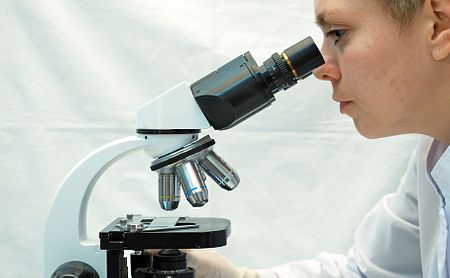Stem Cells Derived From Skin Show Early Potential to Treat RDEB

Skin-derived stem cells producing the ABCB5 protein outperformed those derived from bone marrow at migrating toward and integrating into wounds associated with recessive dystrophic epidermolysis bullosa (RDEB), a study reports.
These cells also show a less pro-inflammatory potential, and their ability to modify the immune response may make them useful in regenerative medicine therapies beyond RDEB, its researchers suggested.
The study, “ABCB5+ dermal mesenchymal stromal cells with favorable skin homing and local immunomodulation for Recessive Dystrophic Epidermolysis Bullosa treatment,” was published in the journal Stem Cells.
Due to a defect in the collagen type VII (C7)-producing COL7A1 gene, skin layers are weakly connected in people with RDEB, leaving the skin extremely fragile and prone to difficult-to-treat blisters.
Potential cell therapies for RDEB involve mesenchymal stem cells taken from the bone marrow (BM-MSCs). These cells were shown to improve skin integrity and speed wound healing in a mouse model of the disorder, and various approaches are in clinical testing.
More recently, a subset of MSCs from the skin — called dermal MSCs, or DSCs — have also shown regenerative potential. These cells are identified and isolated via a protein marker called ATP-binding cassette subfamily member 5 (ABCB5).
An international team of researchers used a mouse model to further investigate the regenerative potential of DSCs positive for ABCB5 by assessing their ability to home in on skin wounds and promote wound healing in mice with poor skin integrity. Results with these DSCs were compared to treatment with BM-MSCs.
Dermal stem cells that were ABCB5-positive proved better at integrating into wounds than either BM-MSCs or DSCs lacking the ABCB5 protein, results at 14 days post-wound treatment showed.
A genetic analysis revealed that DCSs containing ABCB5 had increased activation of genes related to the immune system, tissue remodeling, and the extracellular matrix (ECM), which helps maintain the structure and biochemical support of cells.
ABCB5-positive stem cells also showed higher activity of a gene within the major histocompatibility complex class II (MHC-II), as well as greater activity of HOXA3, a gene implicated in tissue remodeling and wound repair, among other findings. Notably, the MHC-II is important in regulating immune responses, and expressing its genes could allow cells to evade the immune system and successfully integrate after transplant.
ABCB5-positive DSCs also produced C7 and laminin proteins, both critical for skin wound healing and with impaired production in RDEB. This suggested that these cells’ therapeutic potential may stem from their ability to secrete components of the basement membrane, a specialized layer of ECM that separates cells from connective tissues
Finally, although both DSCs containing ABCB5 and BM-MSCs could influence immune cells called macrophages to adopt anti-inflammatory characteristics, “the added ability of the ABCB5+ DSCs to home to wounded skin suggests their potential advantage over BM-MSCs for development as a cellular wound healing therapy,” the scientists wrote.
These researchers plan to investigate the role that genes such as HOXA3 play in the skin homing and wound healing properties of ABCB5-positive DSCs, as well as the mechanism by which these cells influence macrophages.
“These novel findings,” they wrote, “provide mechanistic insight into the contribution of MSCs to treatment of chronic wounds.”






